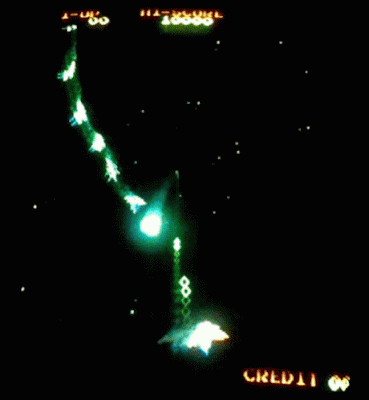This early video arcade game wed the Space Invaders template to the mobility and dimension of Tempest for a more exciting shoot-em-up—set to Bach.
by Rich Watson
I first played video games in the mid-eighties, during junior high school. Enticed by alien adventures in cartoons and comic books, among the first games that attracted me were variations on Space Invaders: Galaxian, Phoenix, Galaga, Gorf. Kill the armada of alien spaceships before they kill you. Simple.
Then in 1983, a new space game provided a greater challenge: it allowed movement in three hundred sixty degrees.

This is fascinating. I loved arcade games in that era, but I've never played Gyruss. It looks so cool. I've toyed with the idea of buying one of those arcade cabinets that has multiple games. There are super expensive ones that are out of my league, but I've looked at a Ms. Pac-Man one that has about 10 games included. We'll see if I can justify such a frivolous purchase!
ReplyDeleteRich, I'm not on Twitter anymore, which is where we would chat sometimes, but I think you have my email, and if you have Instagram I can give you my handle. I didn't want to lose touch!
I would kill for an arcade cabinet of my own. They don’t come cheap. I’ve seen people on YouTube with entire arcades in their basements.
ReplyDeleteIf yours is still the MSN address then I do indeed still have your email.
That's the one. A full on arcade would be amazing!
Delete